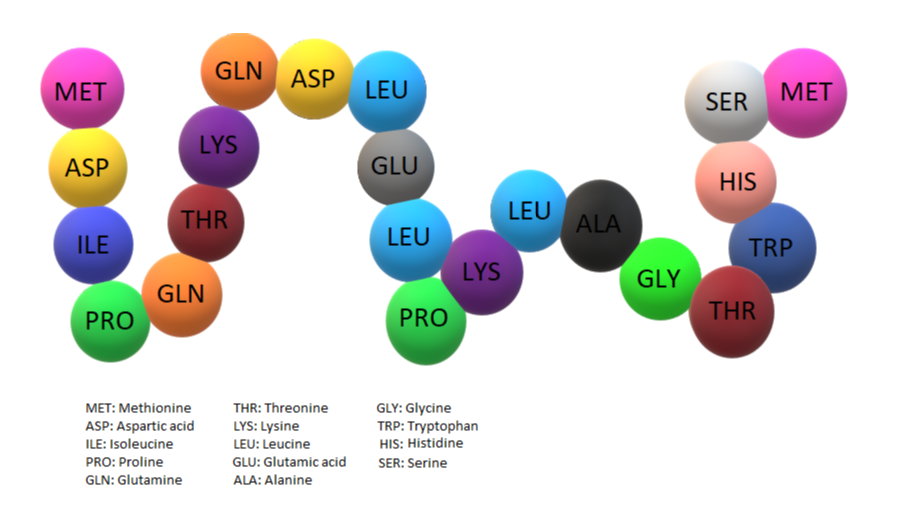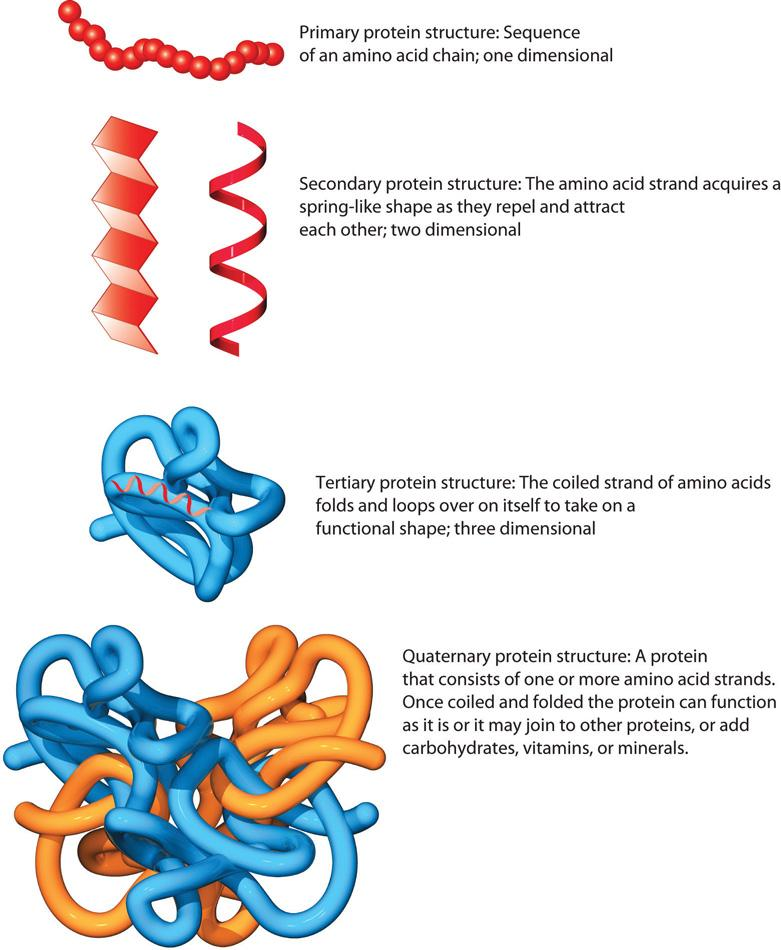
What is a repeating unit of protein?
Answer
410.1k+ views
1 likes
Hint: Proteins are large molecules having high molecular weight. These molecules are of high importance in many fields. Within the organisms, proteins perform a vast variety of functions. Some of these include performing DNA replication, acting as catalysts during biological reactions.
Complete answer:
Proteins are known as polymers, that is they are molecules of greater molecular weight composed of repeating units of smaller structural and functional units. These repeating units present in a protein molecule are known as amino acids. It is also known as the monomers in a protein polymer. These are organic compounds that contain an amino group, that is –NH2 and a carboxylic acid group –COOH, along with an R side chain group, which can be either an H atom or an alkane chain of any length. The nature of the amino acid depends on the composition of the R group. The major atoms that constitute amino acids are C, H, O, S and N. There exist about 500 naturally occurring amino acids.

Figure: An amino acid chain making up a peptide or a protein molecule
These chains of amino acids make up a peptide chain and multiple peptide chains aligned together in various conformations make up a protein molecule.

Figure: The different structures of a protein molecule.
Note:
A protein molecule has different structures. That is, primary, secondary, tertiary and quaternary. The primary structure includes the arrangement of amino acids one after the other connected by peptide bonds. The secondary structure involves the further folding of the primary structure; there are two types of secondary structures, known as the alpha helix and the beta pleated structures. The tertiary structure involves further forming a loop and forming a three dimensional structure. Quaternary structure involves looping of further more amino acid strands.
Complete answer:
Proteins are known as polymers, that is they are molecules of greater molecular weight composed of repeating units of smaller structural and functional units. These repeating units present in a protein molecule are known as amino acids. It is also known as the monomers in a protein polymer. These are organic compounds that contain an amino group, that is –NH2 and a carboxylic acid group –COOH, along with an R side chain group, which can be either an H atom or an alkane chain of any length. The nature of the amino acid depends on the composition of the R group. The major atoms that constitute amino acids are C, H, O, S and N. There exist about 500 naturally occurring amino acids.

Figure: An amino acid chain making up a peptide or a protein molecule
These chains of amino acids make up a peptide chain and multiple peptide chains aligned together in various conformations make up a protein molecule.

Figure: The different structures of a protein molecule.
Note:
A protein molecule has different structures. That is, primary, secondary, tertiary and quaternary. The primary structure includes the arrangement of amino acids one after the other connected by peptide bonds. The secondary structure involves the further folding of the primary structure; there are two types of secondary structures, known as the alpha helix and the beta pleated structures. The tertiary structure involves further forming a loop and forming a three dimensional structure. Quaternary structure involves looping of further more amino acid strands.
Recently Updated Pages
Express the following as a fraction and simplify a class 7 maths CBSE

The length and width of a rectangle are in ratio of class 7 maths CBSE

The ratio of the income to the expenditure of a family class 7 maths CBSE

How do you write 025 million in scientific notatio class 7 maths CBSE

How do you convert 295 meters per second to kilometers class 7 maths CBSE

Write the following in Roman numerals 25819 class 7 maths CBSE

Trending doubts
State and prove Bernoullis theorem class 11 physics CBSE

What are Quantum numbers Explain the quantum number class 11 chemistry CBSE

Write the differences between monocot plants and dicot class 11 biology CBSE

Who built the Grand Trunk Road AChandragupta Maurya class 11 social science CBSE

1 ton equals to A 100 kg B 1000 kg C 10 kg D 10000 class 11 physics CBSE

State the laws of reflection of light




